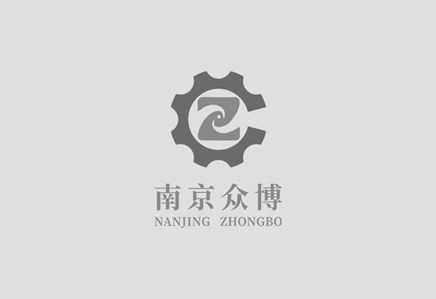Compared with international industry standards, it is urgent for the domestic stamping and sheet metal industry to improve process equipment
Recently, Qi Junhe, Deputy Secretary General of the China Forging Association, revealed that "during the 12th Five Year Plan period, the average annual growth rate of the output value of China's stamping and sheet metal industries will not be less than 10%.". However, compared with its peers in the United States and Japan, China's stamping and sheet metal industries currently have relatively backward technological equipment and a relatively low level of informatization. In order to achieve large-scale, batch, and even personalized production in the future, continuous improvement and adoption of advanced manufacturing processes are needed.
Future direction: Low carbon, environmental protection, energy conservation, and material conservation
Stamping and sheet metal production involve various aspects of the manufacturing industry, with a wide range of shapes and processes that vary greatly. In the past decade, with China becoming the world's manufacturing center and consumer power, the stamping and sheet metal industry, as one of the basic industries of manufacturing, has also achieved unprecedented development.
It is understood that there are currently about 40000 production enterprises and 2 million employees in the stamping industry nationwide, with an annual production of 28 million tons of stamping parts and a total sales of 400 billion yuan. The annual consumption of thin steel plates below 3mm is over 40 million tons, and the cost of purchasing stamping molds is 40 billion yuan, and the cost of purchasing new stamping equipment is 20 billion yuan. There are currently 30000 enterprises and 1.8 million employees in China's sheet metal and manufacturing industry, with an annual production of approximately 42 million tons of sheet metal parts and a total sales volume of 500 billion yuan.
The development of China's stamping and sheet metal industry in the future must comply with the design, production, and consumption concepts of low-carbon, environmental protection, energy conservation, and material conservation. Production must also develop towards precision and efficiency, while enterprises must develop towards specialization, scale, and globalization.
American Model: Automated Production, Safe and Reliable
When comparing the current situation of domestic and foreign stamping and sheet metal processing enterprises, Qi Junhe chose the United States and Japan as reference points. The biggest difference between Chinese and American stamping and sheet metal enterprises is the level of automation and informatization.
Firstly, the closed-loop control automation adopted by American companies is safer and more reliable, making it easier to maintain the operation of the entire production line. Enterprises have their own tooling and mold maintenance workshops, where various sensors are installed or embedded on the molds. The application of these sensors greatly improves the safety and reliability of the entire production line.
Secondly, American stamping and sheet metal companies have a high level of safety awareness. The pressure machine is equipped with safety gratings. When the worker is too close to the pressure machine, the pressure machine automatically stops to ensure the safety of the worker.
Again, American companies have their own management information systems. The materials supplied by its raw material suppliers all come with barcodes. When stored, various information about the raw materials will be automatically entered into the production database through scanning. As raw materials enter the processing process, the computer hosts at each processing stage will automatically input processing information into the database, and this information will always be attached to the final product.
In addition, although American companies have a relatively large scale, their product lines are not very extensive. They all have fixed purchasers, such as Delphi and Ford, and their common feature is the large production volume of their products. The American corporate model is the direction for the future development of our stamping and sheet metal enterprises!
Japanese mode: The process equipment is stunning
Overall, Japan's stamping production is highly specialized and automated, with a large production scale, high product accuracy, humanized and systematic management, and basic capabilities in mold development, design, and processing. It has also established specialized factories with its Japanese main factory users coming to China.
Compared with Japanese stamping professional enterprises, the various enterprise indicators of Chinese stamping professional enterprises still differ significantly and need to be improved. Especially the various production tips and process equipment accumulated by Japanese enterprises in production can be said to be the perfect combination of modern advanced manufacturing technology and traditional human intelligence, which has amazed all visitors. Therefore, Chinese enterprises should gradually improve their manufacturing technology and process equipment in the future.
Currently: Introducing advanced manufacturing industrial equipment
Qi Junhe pointed out that the overall situation of stamping parts manufacturing enterprises in China is relatively small, with outdated manufacturing equipment, mainly manual production, poor product quality stability, low production efficiency, and difficulty in achieving mass production and timely supply. Industry enterprises still need to improve and enhance in the following areas.
Firstly, improve the existing process equipment, work hard and skillfully, enhance product quality, meet the constantly increasing market demand for product quality and supply requirements, and adopt advanced manufacturing processes and equipment as much as possible, establish a sound quality assurance system, improve precision, specialization, automation, and information manufacturing levels, and meet the requirements of large-scale and flexible production.
Secondly, enterprises should continuously improve and enhance their production and sales levels, continuously reduce their management costs, truly achieve quality and efficiency from management, and enhance their comprehensive competitiveness.
Once again, attention should be paid to the construction of talent teams. While continuously introducing high-quality talents needed by enterprises, it is also important to pay attention to the re education and training of the existing workforce, maintain their technical and management level in sync with the times. At the same time, international exchanges and cooperation should be strengthened, understand the domestic and foreign industry level, collect important industry intelligence, broaden the career of decision-making leadership, and improve the foresight and correctness of decision-making.

